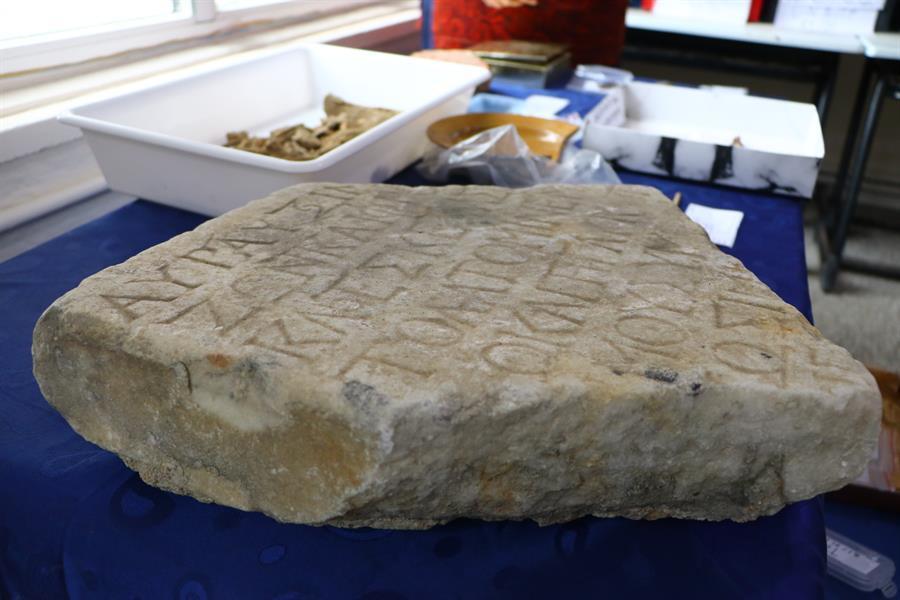
Ceramics, spoon pieces, cooking utensils and animal bones, which are believed to be 5,000 years old, have been unearthed during the excavations carried out in the ancient city of Perinthos in the northwestern province of Tekirdağ’s Marmaraereğlisi district.
Speaking to the state-run Anadolu Agency, Zeynep Koçel Erdem, the head of the excavations and lecturer at the Mimar Sinan University’s Faculty of Arts and Sciences, said the excavations that started this year lasted two and a half months and that they found many pieces.
“We made excavations at the western end of the acropolis in the ancient city. There we found some parts of the early city walls. We think that we are working in the area that was a church over a temple. We also know the existence of the temple and the church from ancient inscriptions. This place was mixed very much and different places were added in the Byzantine period and the period we call young antiquity, so very mixed finds came out,” she said.
Stating that Perinthos is believed to have been founded by colonists from Samos in the 600s B.C., Erdem said that the latest finds can take the history of this settlement much earlier and that studies on ceramic pieces and stone tools, which are estimated to belong to the 3rd millennium, are continuing.
Explaining that many animal bones were unearthed during the excavations, Erdem said: “We see that a large number of poultry, cattle and seafood were eaten in the area. We will be able to revive the ancient cuisine from the ceramics, spoon pieces and cooking pots we got here. Once these bones are thoroughly examined, we will be able to get an idea about the economy of eating and drinking. The ceramic pieces we found are from the Bronze Age 5,000 years ago. We understand that the first people of Perinthos lived in the Acropolis 5,000 years ago. The existence of the earliest layers in the acropolis is revealed by these remains. If, as a result of the examination, it becomes clear that the ceramics are from 3,000 years ago, we will have an important finding showing that there was a settled life 5,000 years ago.”
Emphasizing that they also aim to reveal the church and the temple underneath in the future excavations, Erdem said that there is a very large area to work in the ancient city, which is considered to have the largest theater in Thrace.
Stating that the excavations are important in terms of revealing the traces of Thracian, Roman and Byzantine civilization, Provincial Culture and Tourism Director Ahmet Hacıoğlu said: “The face of our city will change with the finds to be unearthed in the near future. Marmaraereğlisi will be one of the most preferred places in terms of history and cultural tourism.”